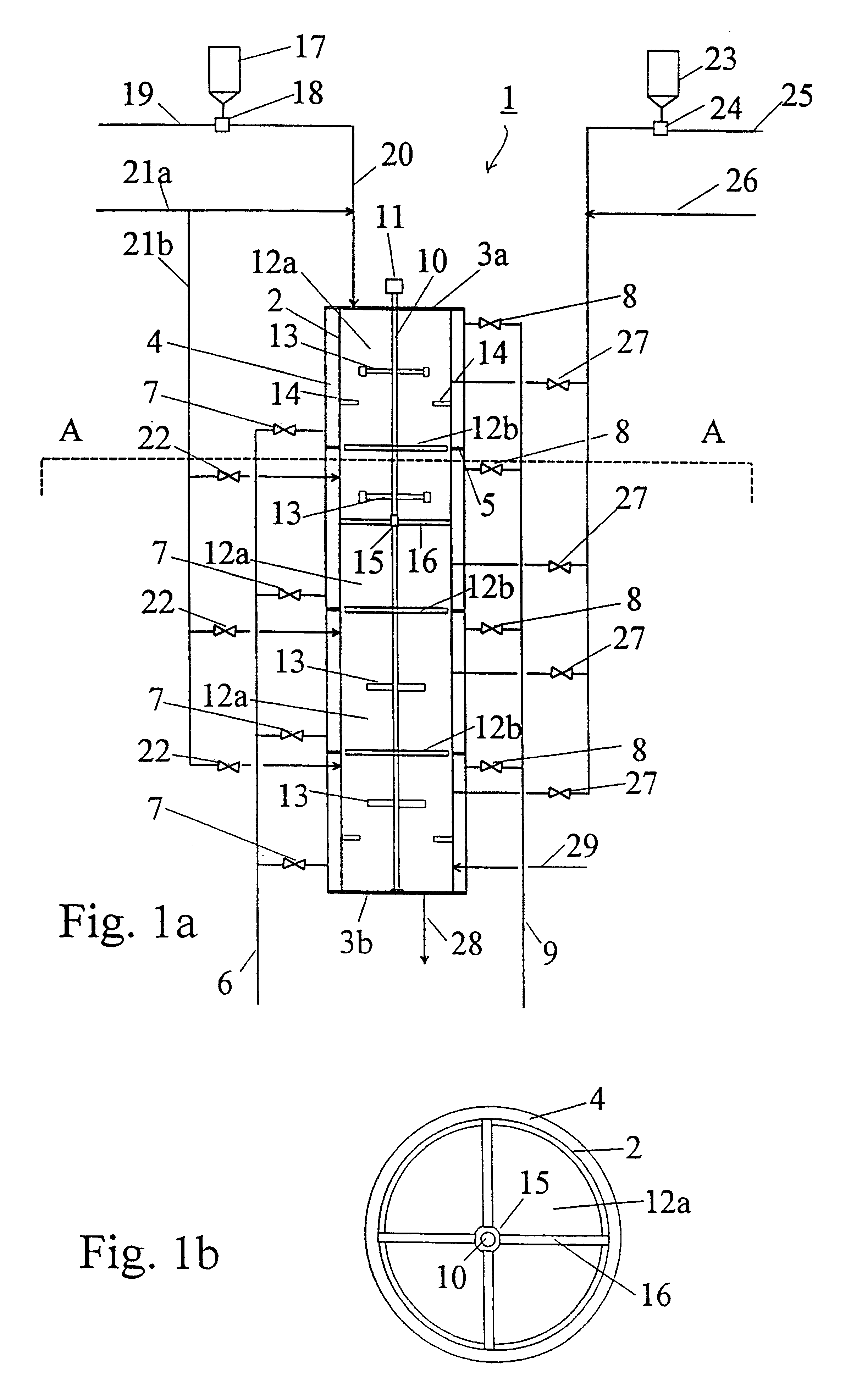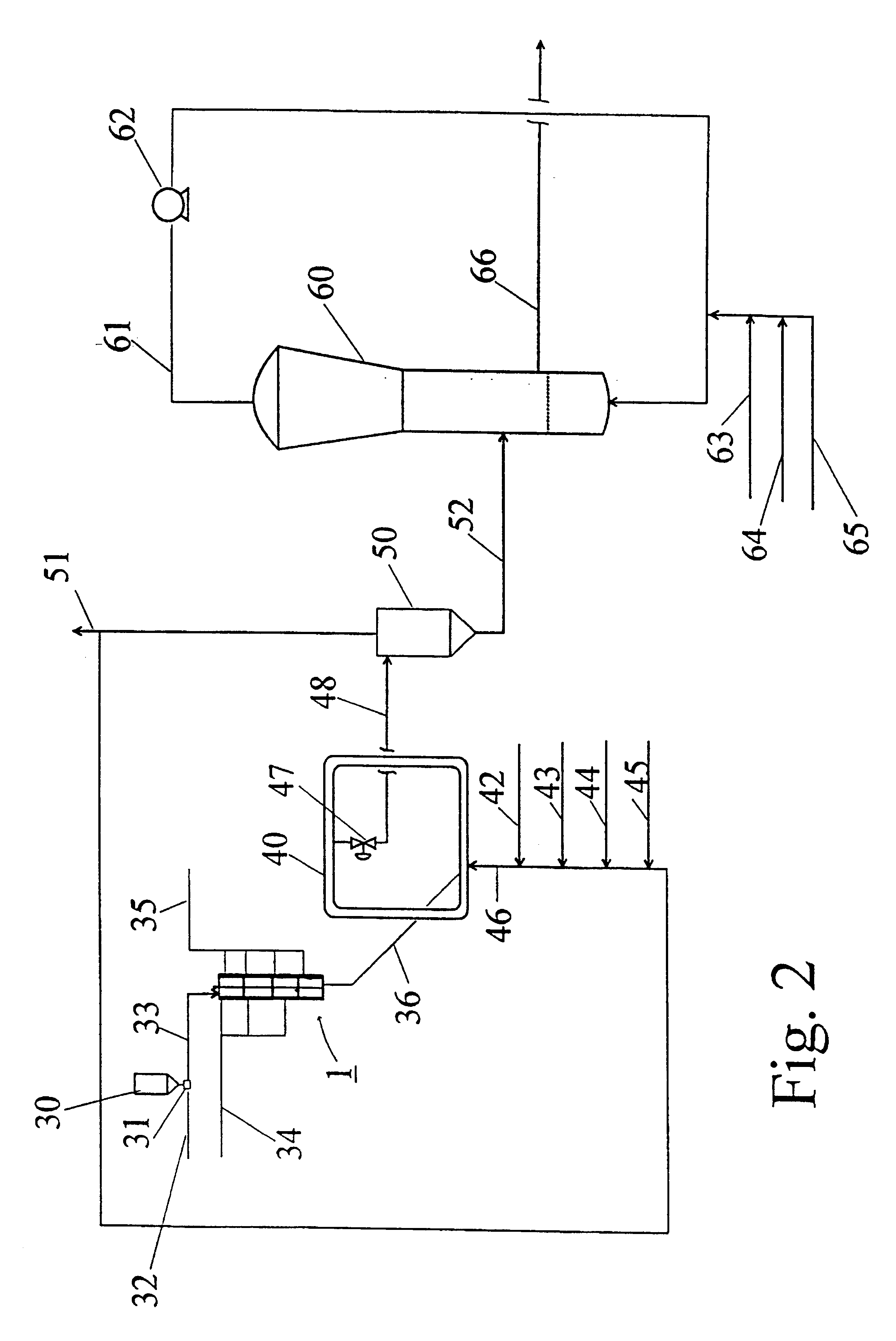Process and an apparatus for polymerization of olefin monomers
- Summary
- Abstract
- Description
- Claims
- Application Information
AI Technical Summary
Benefits of technology
Problems solved by technology
Method used
Image
Examples
example 1
A pilot plant operated continuously was used to produce PP-homopolymer. The plant comprises a catalyst, alkyl, donor and propylene feed systems and a small stirred tank reactor named as CCSTR due to several compartments. Said components are fed to the CCSTR.
The catalyst used was a highly active and stereospecific ZN-catalyst made according to Finnish Patent No. 88047. The catalyst was contacted with triethylaluminium (TEA) and dicyclopentyldimethoxysilane (DCPDMS) (Al / Ti ratio was 3 and Al / donor was 3 (mole)) before feeding to the CCSTR.
The catalyst was fed according to Finnish Patent No. 90540 and was flushed with propylene (15 kg / h) to the CCSTR in which also TEA and DCPDMS are fed. The CCSTR was operated at 40 bar pressure, 20.degree. C. temperature and mean residence time of the catalyst at 3 min. Al / Ti (mole) ratio was kept at 150 and Al / donor ratio at 5.
The loop reactor was operated at 39 bar pressure, 70.degree. C. temperature and mean residence time of the catalyst at 3 h. T...
example 3
Procedure of the Example 1 was repeated.
Example 4
Procedure was the same as Example 1 but the mean residence time of the catalyst was kept at 4 min.
example 6
Procedure was the same as Example 1 but the mean residence time of the catalyst was kept at 2 min.
PUM
| Property | Measurement | Unit |
|---|---|---|
| Temperature | aaaaa | aaaaa |
| Temperature | aaaaa | aaaaa |
| Fraction | aaaaa | aaaaa |
Abstract
Description
Claims
Application Information
 Login to View More
Login to View More - R&D
- Intellectual Property
- Life Sciences
- Materials
- Tech Scout
- Unparalleled Data Quality
- Higher Quality Content
- 60% Fewer Hallucinations
Browse by: Latest US Patents, China's latest patents, Technical Efficacy Thesaurus, Application Domain, Technology Topic, Popular Technical Reports.
© 2025 PatSnap. All rights reserved.Legal|Privacy policy|Modern Slavery Act Transparency Statement|Sitemap|About US| Contact US: help@patsnap.com



